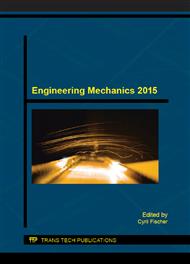p.63
p.70
p.79
p.85
p.91
p.97
p.105
p.113
p.120
Influence of Working Parameters and Primary Breakup Conditions on the Quality of Twin-Fluid Atomizers Spray Quality
Abstract:
In this study we investigated four twin-fluid atomizers with different internal mixing mechanisms: Y-jet, outside in gas (OIG), outside in liquid (OIL) and CFT atomizers. The main goal was to relate the measured droplet sizes, characterized by the Sauter mean diameter (ID32), to the corresponding working regimes of atomizers and primary breakup conditions characterized by the criterion Dmax, estimated from critical Weber number of the primary breakup. For the OIL, OIG and CFT atomizers, the common relation of the primary breakup characteristics and normalized droplet sizes (ID32/Dmax) was found. As the Y-jet atomizer showed a different trend, which was related to the considerably lower Weber numbers of the near-nozzle flow, a change in the normalization criterion was necessary to obtain similar results as for other tested atomizers. The main benefit of presented results is the potential to predict spray droplet sizes entirely from primary breakup characteristics regardless of the atomizer’s design or the atomized liquid.
Info:
Periodical:
Pages:
91-96
Citation:
Online since:
January 2016
Price:
Сopyright:
© 2016 Trans Tech Publications Ltd. All Rights Reserved
Share:
Citation:


